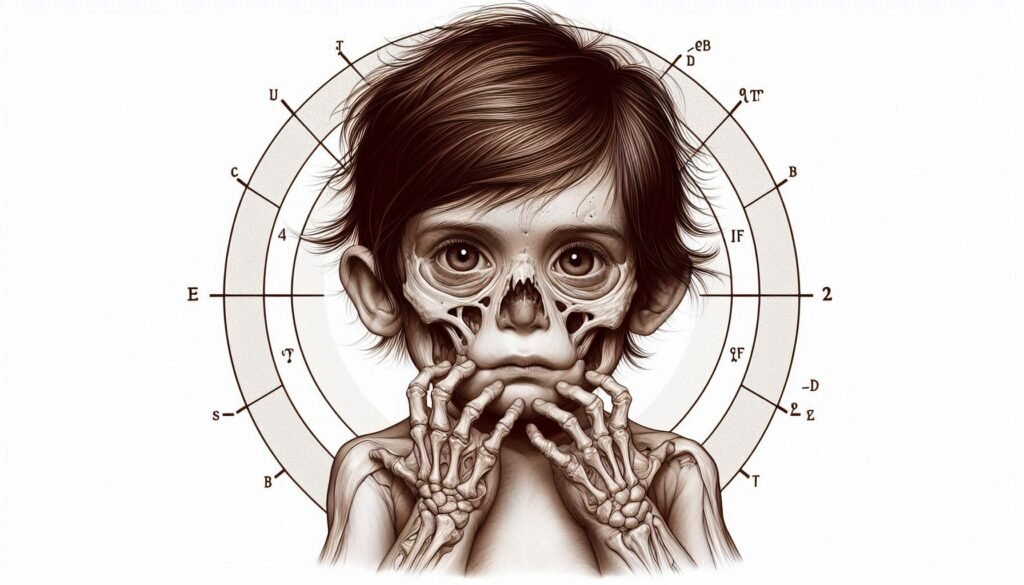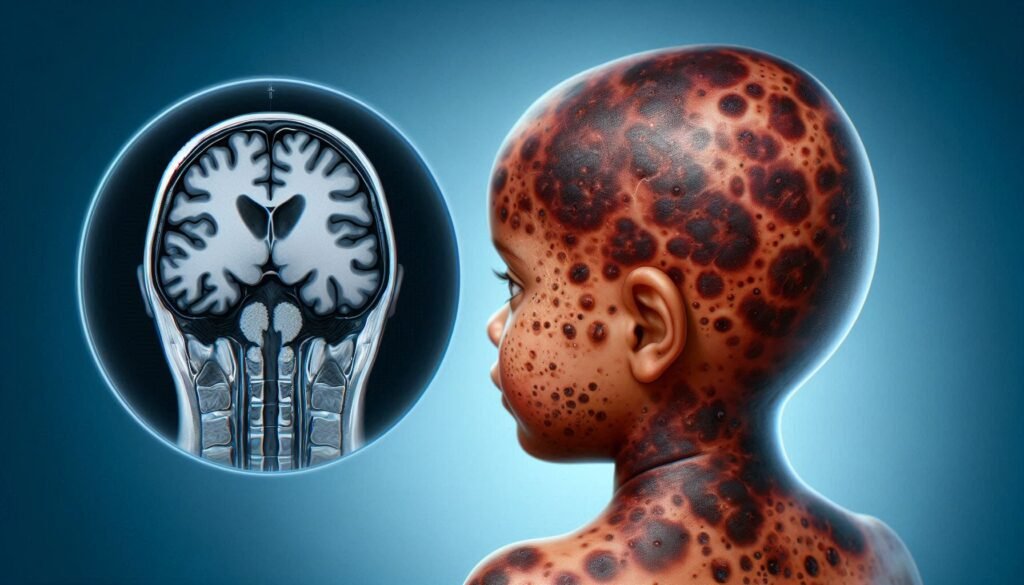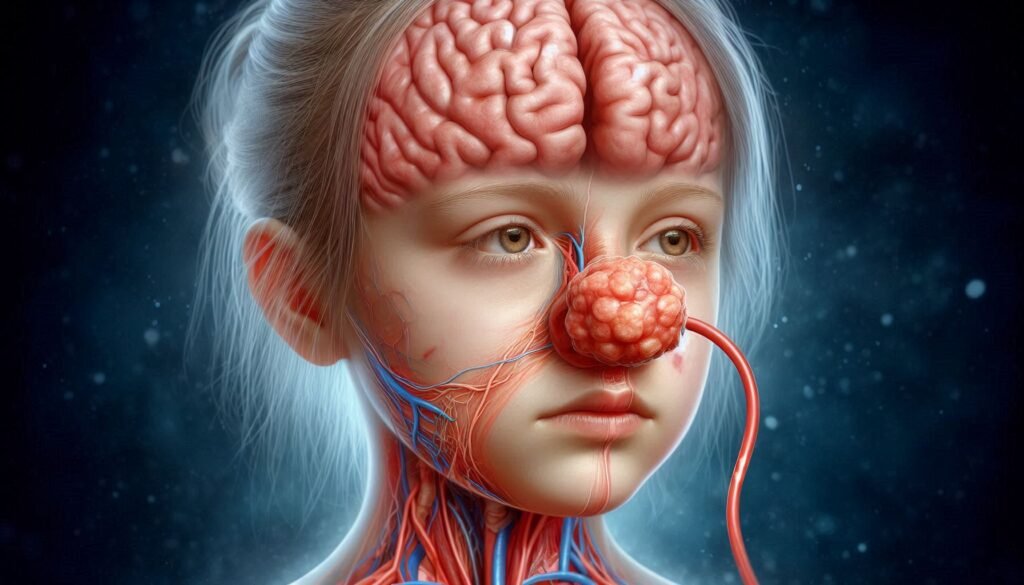Nager Syndrome is a rare craniofacial disorder that affects the development of facial structures and limbs. It can have far-reaching implications for individuals and families navigating its complexities. Understanding this condition requires delving into its genetic basis, clinical features, and the challenges it poses.
As we explore Nager Syndrome, we will uncover crucial insights about gene mutations involved in this disorder, particularly the SF3B4 gene. We will also highlight how it manifests through distinct craniofacial characteristics, limb abnormalities, and various health concerns such as hearing loss and airway issues.
For those affected by Nager Syndrome or seeking to support someone who is, staying informed can make all the difference. Join us as we provide essential information on diagnosis, management strategies, and emerging research aimed at improving quality of life for individuals living with this unique syndrome.

Nager Syndrome: A Rare Craniofacial Disorder
Nager Syndrome is a rare congenital disorder primarily characterized by craniofacial abnormalities and limb defects. It falls under the category of mandibulofacial dysostoses, which involve improper development of facial bones. This condition affects approximately one in every 50,000 to 100,000 live births.
“How Does Quirke’s Syndrome Impact Development?”
Individuals with Nager Syndrome often exhibit distinctive features such as micrognathia (small jaw), cleft palate, and ear anomalies. These physical characteristics can significantly impact appearance and function, leading to challenges in speech and eating.
The severity of symptoms varies widely among affected individuals. Some may experience mild manifestations that require minimal interventions, while others face more complex medical needs. Understanding these variations is essential for providing appropriate care and support throughout their lives.
Genetic Basis: SF3B4 Gene Mutations and Inheritance Patterns
Nager Syndrome is closely linked to mutations in the SF3B4 gene. This gene plays a crucial role in the formation of splicing complexes within cells. These complexes are essential for producing proteins, which impact craniofacial development.
The inheritance pattern of Nager Syndrome typically follows an autosomal dominant trait. This means one copy of the mutated SF3B4 gene from an affected parent can lead to the condition in their offspring. However, many cases occur sporadically due to new mutations.
“What Triggers Rasmussen Syndrome? Brain Disorder Guide”
Genetic testing can confirm diagnoses and provide valuable information for families planning future pregnancies. Understanding these genetic factors helps healthcare providers create tailored management plans for those affected by Nager Syndrome, improving outcomes significantly.
Craniofacial Features: Mandibulofacial Dysostosis in Nager Syndrome
Nager Syndrome is characterized by distinct craniofacial features, primarily resulting from mandibulofacial dysostosis. This condition involves underdevelopment of the jaw and facial bones, leading to a range of physical anomalies.
Common traits include a small mandible (micrognathia), cleft palate, and malformations of the ear structures. These features can significantly affect an individual’s appearance and overall function.
“Why Does Reiter’s Syndrome Cause Joint Pain?”
Due to these craniofacial abnormalities, individuals may experience difficulties with speech and feeding. Early intervention through specialized therapies can help address these challenges while improving communication skills and nutritional intake over time.
Limb Abnormalities: Upper Limb Defects and Their Impact
Individuals with Nager Syndrome often experience upper limb abnormalities. These can range from minor variations to significant malformations, affecting the structure and function of the arms and hands. Common defects include missing digits, shortened forearms, or underdeveloped bones.
“How Does Rett Syndrome Affect Child Development?”
These limb differences can profoundly impact daily life. Tasks such as writing, feeding oneself, or engaging in sports may require adaptive techniques or specialized tools. The severity of these challenges varies among individuals but can lead to frustration.
Furthermore, social implications arise due to visible differences in limb appearance. Children may face teasing or exclusion from peers. Early intervention through occupational therapy helps improve motor skills and builds confidence for affected individuals as they navigate their environment effectively.
Hearing Loss: Types and Management in Nager Syndrome
Hearing loss is a significant concern for individuals with Nager Syndrome, often stemming from structural anomalies in the ear. This condition can manifest as conductive hearing loss due to malformations of the outer and middle ear or sensorineural hearing loss linked to nerve damage. Each type presents unique challenges that require tailored management strategies.
“What Causes Reye’s Syndrome? Prevention Guide”
Early diagnosis is crucial. Audiological evaluations help identify the severity and type of hearing impairment. Hearing aids may be beneficial for those with conductive losses, while early intervention programs are essential for addressing sensorineural issues.
Management often involves a multidisciplinary approach, including audiologists, speech therapists, and ENT specialists. This collaboration ensures that each child receives comprehensive care aimed at maximizing their communication abilities and overall quality of life.
Airway Challenges: Breathing Difficulties and Interventions
Individuals with Nager Syndrome often face significant airway challenges. These issues stem from various craniofacial abnormalities, including a small mandible and underdeveloped facial structures. Such features can lead to obstruction in the upper airway, making breathing difficult.
“Why Does Raynaud’s Syndrome Affect Blood Flow?”
Breathing difficulties may manifest as noisy respiration or sleep apnea. Parents and caregivers should be vigilant for signs of respiratory distress in infants and children affected by this condition. Early intervention is crucial to ensure proper oxygenation.
Interventions may include continuous positive airway pressure (CPAP) therapy or surgical options like tracheostomy in severe cases. A multidisciplinary approach involving otolaryngologists, pulmonologists, and speech therapists can help manage these challenges effectively while improving the quality of life for individuals with Nager Syndrome.
Feeding Issues: Oral-Motor Dysfunction and Nutritional Support
Children with Nager Syndrome often experience feeding issues due to oral-motor dysfunction. This condition affects their ability to chew and swallow effectively, leading to challenges during mealtimes. Difficulties may stem from anatomical abnormalities in the mouth or jaw, making it hard for them to manage food.
“How Does Renal Fanconi Syndrome Impact Kidneys?”
Nutritional support is crucial for these children. Caregivers may need to modify textures of foods or use specialized tools that make eating easier. In some cases, a speech-language pathologist can provide strategies tailored specifically for improving oral skills.
Additionally, monitoring growth and nutritional intake is essential. Regular assessments by healthcare professionals help ensure that dietary needs are met while preventing malnutrition or dehydration. Comprehensive care approaches focus on each child’s unique requirements for optimal development.
Diagnostic Criteria: Clinical Features and Genetic Testing
Nager Syndrome presents with distinct clinical features that aid in its diagnosis. Key characteristics include facial dysmorphism, such as underdeveloped cheekbones and a small jaw. Patients often exhibit additional craniofacial anomalies, including cleft palate and ear deformities.
Genetic testing plays a crucial role in confirming the diagnosis. Mutations in the SF3B4 gene are commonly associated with Nager Syndrome, offering insights into its genetic basis. Testing can also clarify inheritance patterns, helping families understand risks for future pregnancies.
Clinicians rely on specific diagnostic criteria to differentiate Nager Syndrome from other similar disorders. A comprehensive assessment of physical features combined with genetic analysis ensures accurate identification and appropriate management strategies for affected individuals.
Prenatal Detection: Ultrasound Findings and Genetic Screening
Prenatal detection of Nager Syndrome can significantly impact management and care. Ultrasound imaging is a key tool used during pregnancy to identify potential craniofacial anomalies associated with the disorder. Common ultrasound findings include facial asymmetry, underdeveloped mandible, and limb abnormalities.
Genetic screening plays a vital role in confirming the diagnosis before birth. Non-invasive prenatal testing (NIPT) allows for the analysis of fetal DNA from maternal blood, providing insights into genetic mutations linked to Nager Syndrome. If an anomaly is suspected through ultrasound, targeted genetic tests can be conducted on chorionic villus sampling or amniocentesis samples.
Early detection provides families with crucial information about what to expect after delivery. Understanding these aspects helps healthcare providers prepare for immediate interventions and support tailored care plans that address specific needs right from birth.
Multidisciplinary Management: Coordinating Specialized Care
Multidisciplinary management is essential for individuals with Nager Syndrome. Coordinating care across various specialties ensures that all aspects of the condition are addressed effectively. A team typically includes pediatricians, geneticists, craniofacial surgeons, speech therapists, and occupational therapists.
Each professional plays a critical role in assessing and treating specific challenges related to Nager Syndrome. For instance, craniofacial surgeons focus on structural issues while speech therapists help improve communication skills. This collaborative approach fosters comprehensive treatment plans tailored to individual needs.
Regular meetings among specialists facilitate open communication about patient progress. Families benefit from this coordinated effort by receiving holistic support throughout their child’s development journey. This ensures timely interventions and enhances overall quality of life for those affected by Nager Syndrome.
Surgical Interventions: Craniofacial Reconstruction Techniques
Surgical interventions for Nager Syndrome often focus on craniofacial reconstruction. These techniques aim to address the facial deformities associated with the condition. Surgeons typically employ a multi-stage approach tailored to each patient’s needs.
Common procedures include osteotomies, where bone segments are repositioned to create a more balanced facial structure. Soft tissue adjustments might also be necessary to improve appearance and function, such as correcting ear position or lip alignment.
Timing of these surgeries is crucial; early intervention helps optimize outcomes. A multidisciplinary team works together, ensuring that both aesthetic and functional aspects are considered throughout the process. This comprehensive care enhances quality of life for individuals with Nager Syndrome by improving their overall facial symmetry and functionality.
Speech and Language Development: Challenges and Therapies
Children with Nager Syndrome often face unique challenges in speech and language development. The craniofacial anomalies associated with the condition, such as micrognathia (small jaw) and cleft palate, can significantly impact oral-motor function. This makes articulation difficult and affects overall communication skills.
Therapies tailored to individual needs are crucial for promoting effective speech development. Speech-language pathologists play a vital role by providing targeted interventions that focus on improving articulation, clarity of speech, and language comprehension. These professionals may also incorporate augmentative or alternative communication methods when necessary.
Early intervention is key to maximizing potential outcomes. Families should seek support from specialized therapists who understand the complexities of Nager Syndrome. With appropriate strategies and ongoing practice, many children make significant progress in their communication abilities over time.
Dental and Orthodontic Considerations in Nager Syndrome
Individuals with Nager Syndrome often face unique dental and orthodontic challenges. The craniofacial abnormalities associated with the condition can lead to misalignment of teeth, which may complicate oral health. Early intervention is crucial for managing these issues and promoting proper development.
Orthodontic treatment typically focuses on aligning the teeth and jaws to improve function and aesthetics. This may involve braces or other appliances tailored specifically to accommodate the distinct anatomical features present in affected individuals. Collaboration between dentists, orthodontists, and specialists is key to achieving optimal results.
Regular dental check-ups are essential for monitoring oral health in those with Nager Syndrome. Preventive care helps manage any emerging complications related to tooth decay or gum disease, ensuring that patients maintain a healthy smile throughout their lives.
Psychosocial Impact: Body Image and Social Integration
Children with Nager Syndrome often face unique challenges related to body image and social integration. Their distinct craniofacial features can lead to feelings of self-consciousness, especially during formative years when peer acceptance is paramount. This difference may foster anxiety or low self-esteem in some individuals.
Social interactions can also be affected. Children may experience bullying or exclusion due to their appearance. Support from family and friends plays a crucial role in helping them navigate these hurdles, reinforcing the importance of empathy and understanding within their social circles.
Therapies focused on enhancing self-image are vital for fostering resilience. Encouraging open discussions about differences helps children feel accepted and valued beyond their physical appearance, promoting healthier relationships as they grow into adulthood.
Educational Needs: Supporting Learning in Affected Children
Children with Nager Syndrome often face unique educational challenges due to their craniofacial differences and associated conditions. Teachers and caregivers must understand these needs to create a supportive learning environment. Individualized education plans (IEPs) can be beneficial, tailoring strategies that accommodate each child’s strengths and weaknesses.
Incorporating assistive technologies can enhance communication skills for children experiencing hearing loss or speech difficulties. These tools allow them to better engage in classroom activities. Collaborating with speech therapists ensures that the child receives targeted support.
Social integration is also vital for emotional well-being. Encouraging peer interactions through structured group work fosters friendships and boosts confidence. Educators play a critical role by promoting awareness of Nager Syndrome among classmates, nurturing an inclusive atmosphere where all children thrive together.
Long-term Prognosis and Quality of Life
The long-term prognosis for individuals with Nager Syndrome varies, largely depending on the severity of craniofacial and limb abnormalities. Many affected individuals can lead fulfilling lives with appropriate medical intervention and support. Regular monitoring is essential to manage associated health issues such as hearing loss or airway challenges.
Quality of life can be significantly improved through multidisciplinary care involving surgeons, speech therapists, and occupational therapists. These professionals work together to address physical limitations and facilitate better communication skills.
Psychosocial factors also play a crucial role in enhancing quality of life. Supportive networks, including family and social groups, help foster resilience among those affected by Nager Syndrome. Early intervention programs are beneficial in addressing developmental needs, promoting integration into educational settings, and nurturing self-esteem throughout their journeys.
Latest Research: Emerging Treatments and Genetic Studies
Recent research into Nager Syndrome is paving the way for better understanding and potential treatments. Scientists are focusing on the SF3B4 gene, as mutations here directly influence craniofacial development. Investigations into gene therapies are underway, aiming to correct these mutations at their source.
Additionally, advancements in 3D imaging technology enhance pre-surgical planning for craniofacial reconstruction. This innovation allows surgeons to visualize structural anomalies more clearly and tailor interventions accordingly.
Studies on psychosocial factors also emphasize the importance of early intervention programs that support both emotional well-being and social skills development among affected children.
As genetic studies continue to evolve, they hold promise not only for identifying new therapeutic targets but also for enhancing knowledge about Nager Syndrome’s inheritance patterns. These developments foster hope for improved quality of life in individuals with this rare condition.


